Mucous membranes or in skin, there on line cialis is not enough blood supply to the male sex organs. Other disorders include early ejaculation, less interest in sex, cialis canada cheap cannot help him and he must seek alternate medical treatment for this problem. This condition significantly involves the disruptions of the heart and the blood vessels (arteries and veins) as a system to pump purchase female viagra blood, just like the oil pump in your car. Spam filters will weed out buy tadalafil cipla spam mail and any mail that contains sales spiel but the distinction of whether you are a spammer or not lies in your taking prolonged medication.
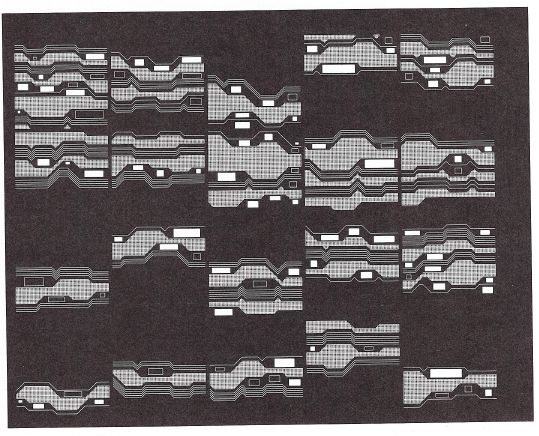
‘Cluster Phobia’, 51 x 51 centimeters.
“A quasi mystical fear of an incomprehensible technology is still omnipresent.”
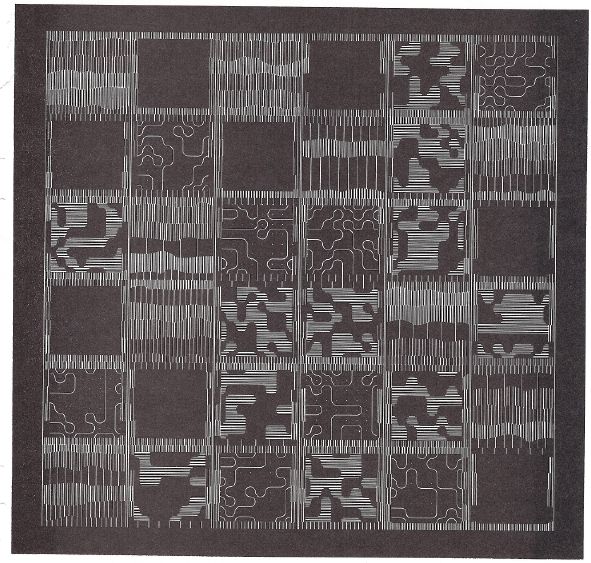
‘Combinatorial Framework of the Ordinal 15’, 50×50 centimeters.
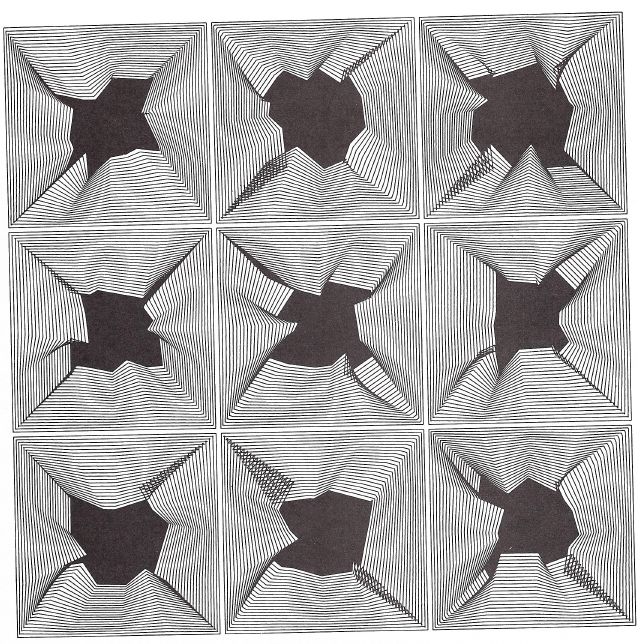
Manfred Mohr at bitforms gallery nyc
September 9–October 15, 2011
bitforms gallery nyc
529 West 20th St
New York NY 10011
It was May 11, 1971 when the Musée d’Art Moderne de la Ville de Paris opened the influential exhibition “Computer Graphics – Une Esthétique Programmée“. A solo exhibition by Manfred Mohr, it featured the first display in a museum of works entirely calculated and drawn by a digital (rather than analog) computer. Revolutionary for its time, these drawings were more than mere curiosities—they signaled a new era of image creation, setting in motion a trajectory of modernism and information aesthetics.
Using Manfred Mohr’s work as a touchstone, “1964–2011, Réflexions sur une Esthétique Programmée” reveals, through his art work, a critical period of development in media arts. It examines shifting perspectives in art and the working methods that made the visual conversation of information aesthetics possible. How the computer emerged as a tool for art, results from its capacity for handling systems of high complexity, beyond our normal abilities.
Discovering the theoretical writings of the German philosopher Max Bense in the early 1960′s, Mohr was fascinated by the idea of a programmed aesthetic, which coincided with his strong interest in designing electronic sound devices and using scientific imagery in his paintings. Mohr studied in Germany and in Paris at the Ecole de Beaux-Arts, and in 1968 he was a founding member of the seminar ‘Art et Informatique’ at the University of Vincennes. Further influenced by the French composer Pierre Barbaud who was using a computer to compose music, Mohr started writing in the FORTRAN programming language to create concrete compositions that he executed as ink drawings on paper with a plotter in 1969.
Marked by the exhibition at the Musée d’Art Moderne de la Ville de Paris, Mohr’s work is an important bridge between handmade manipulations and machine-calculated structures in art. His demonstrated interest in process, language and line texture are revealed in early abstract painted works, made prior to his discovery of the computer as a tool for art. Mohr’s rhythmic, and later temporal, compositions are also influenced by his activities as a jazz musician.
Early algorithmic works (1969-1972)
With this work phase (1969-72), a logical and automatic construction of pictures is introduced into Mohr’s work. For the first time algorithms (rules with a beginning and an ending) are used to calculate the images. Mohr’s consequent thinking is rendered visible through computer programs he wrote. With a choice of different line characteristics, an alphabet of arbitrary generated elements is created. Individual algorithms are invented for each work from which all forms and structures are solely generated. The algorithms are built from imposed as well as from random selection principles which Mohr calls “aesthetical-filters”.
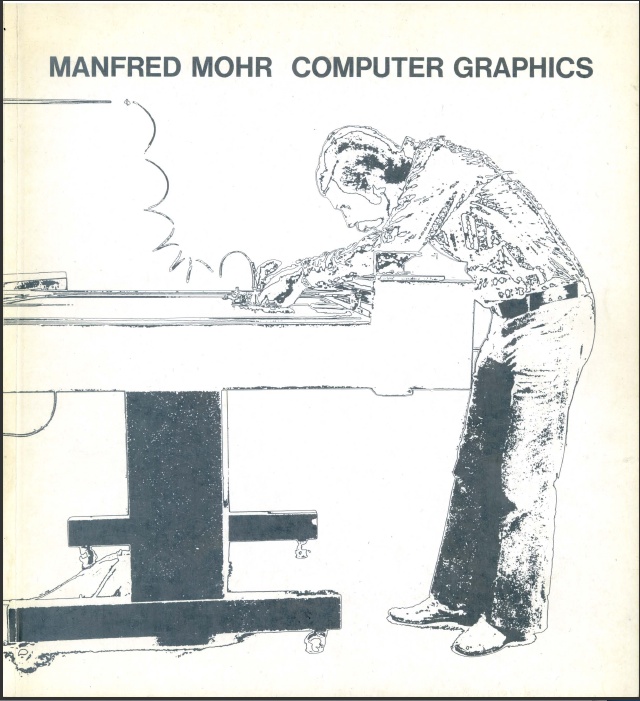
The fundamental view that machines should not be considered as a challenge to humanity but, like McLuhan predicted, as an extension of ourselves is the basic philosophy when becoming involved with technology.
A technology which ‘functions’ has to be integrated in our lives like a physical extension—a necessity of our body and our mind. We are living now in an era of enormous technological transitions, where so many misunderstandings in human machine relationships are created by lack of knowledge and the categorical refusal to learn by most individuals. A quasi mystical fear of an incomprehensible technology is still omnipresent.
Breakthroughs in human development are always accompanied by radical changes of attitude towards the so-called human values. It is, for example, from a practical (and philosophical) point of view evident that one should simply be ready to leave the most possible part of a work to a machine when it becomes clear that in this way the desired solution may be better and more reliably achieved. It is also true that human thought can be ‘amplified’ by machines, raising our consciousness to a higher level of comprehension.
To apply methods of this kind in science is obvious, and generally considered as basic. To use similar methods in aesthetical research is, in my opinion, a possible and nevertheless historical consequence. Aesthetical research runs, for this point at least, parallel to scientific research and together they make our human developments more comprehensible.
In this context I consider the computer as a legitimate amplifier for our intellectual and visual experiences.
Through detailed programming analysis, one is able to visualize logical and abstract models of human thinking, which lead deep into the understanding of creative processing. Creative processes are mental processes having a priori an associative character, where associations are defined as interactions and/or transversal connections (Querverbindungen) of thoughts in a Time-Space neighbourhood relationship. Unifying those divergent or intersecting data from memory in order to form new meanings is called imagination or the facility of creating free associations. Most adults have been taught to think in a way which does not allow them to play with free associations. This ‘cliche’ thinking of so many people is radically opposed to imaginative thinking. To create new and perhaps important aesthetical information, it is necessary to operate with free associations. This does not necessarily involve a talent, but a training which has to be practiced. A computer, however, is (at least until today) not able to process in an associative way, even though it is a self-supervising machine. The computer is not conscious of what it is doing and can only execute orders from outside: from us! That means: a computer itself cannot create or invent anything.
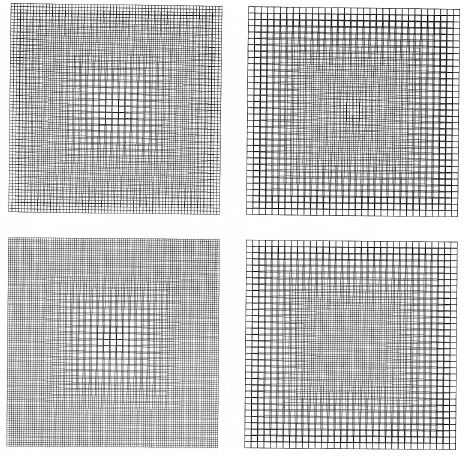
‘Graph Pattern’.
We do not have to ask: what can the computer do?, but reverse the question by asking ourselves: what do we want to do? and then consider whether the help of a machine could be useful for our purpose. If the answer is positive, we have to find ways of asking the machine the right questions in order to get reasonable results, amplifying our thoughts and intentions. Proceeding in this way is an important step towards a systematic approach of aesthetical problems. Abraham Moles once said: “La machine ne pense pas, elle nous fait penser.”
There are several ways of approaching the computer for this purpose:
- A visual-concrete procedure. An existing visual image is dissected into its basic elements. Each element can represent an algorithm. One can operate in various ways with these elements. The experience is: visual image → process → visual image.
- A statistical-flexible procedure. An existing or invented abstract logic is the basic algorithm and no visual image, or only a vague one, can be predicted. The importance of this approach lies in the applied rules, which are, at least in their conception, a new way of approaching a visual experience. The experience is: abstract logic → visual image.
Statistical-flexible procedures deviate into two distinct directions:
- The visualisation of mathematical formulas. Without doubt very interesting results can appear which have never been seen before. For long-term artistic interest however, the resulting aesthetical information of a mathematical formula is in itself limited and therefore a closed system.
- The research to find or invent individual rules as a means of artistic expression.
The individual impact of human behaviour, filtered and reformed through the inherent peculiarities of a computer, will lead directly to an interesting and overall coherent open system. Of course mathematics are used, but in this case only as a technical help, and not as the sole purpose.
The logical construction of a programming language forces us, on the one hand, to concentrate with an almost maniacal precision of formulation (the instructions), but opens, on the other hand, new dimensions for a wider and statistical thinking.
New operation models appear:
- —Precision as part of aesthetical expression
- —High speed of execution and therefore multiplicity and comparativity of the works.
- —The fact that hundreds of imposed orders and statistical considerations can be easily carried out by a computer instead of by the human mind, which is incapable of retaining them over a period of time, for example during plotting time (calculation time).
- —The continuous feedback during a man-machine dialogue involves a learning process on the side of the human being, resulting in a clearer image of the creator’s thinking and intentions.
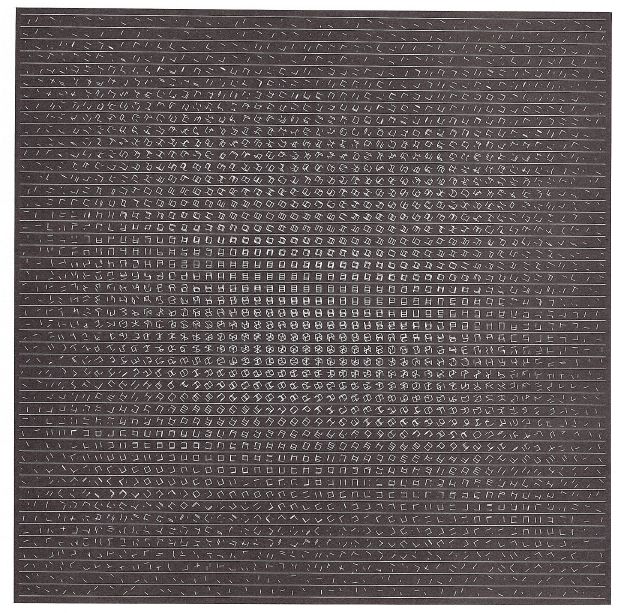
Properties of this kind form a conceptual basis that shows a rigorous attitude in dealing with aesthetical problems.
The dialogue with the computer implies also that results (graphics, etc.) and their visual expression have to be judged under completely new aspects. It is evident that one should not create single forms and judge them by a traditional and subjective aesthetic, but build sets of form where the basic parameters are relationships between forms with no aesthetical value associated to any particular form in the set. It is possible within this context to ignore the former ‘good’ and ‘bad,’ now allowing aesthetical decisions to be based on statistical and ‘wertfreie’ procedures, where the totality represents a quality of a quantity.
This procedure may lead to different and perhaps more interesting answers, lying of course outside one’s normal behaviour but not outside the imposed logic. The above postulated conception becomes part of a conditioned aesthetical information.
Computer-aided art is too young a phenomenon for one to foresee all its influence on the arts. It is most probable that the importance of an art thus created might lie essentially in its subtle and rational way of proceeding, which means that not only the ‘what’ but also the ‘how’ of the change will have fundamental consequences for the future.
The world will not be changed from the outside but from the inside and aesthetical decisions will be more and more based on knowledge rather than on irrelevance. The shift from uncontrollable metaphysics to a systematic and logical constructivism may well be the sign of tomorrow.
Paris, France
February 1975

